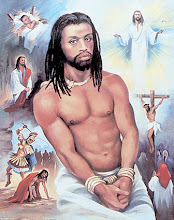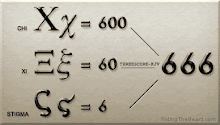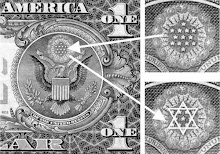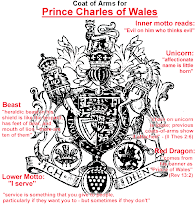Starbuck's Current Logo

Starbuck's Previous Logo

 Abraxas-A term used by the Basilideans, a Gnostic sect of the second century, designating the Supreme Being or god whom they worshipped. They believed that Jesus Christ emanated from Abraxas and was a phantom while here on earth. They believed the name contained great mysteries because it contained the seven Greek letters when computed numerically equaled the number 365, which is the number of days in the year. It was further believed that Abraxas commanded 365 gods, each possessing a virtue, so there was a virtue for each day of the year.
Abraxas-A term used by the Basilideans, a Gnostic sect of the second century, designating the Supreme Being or god whom they worshipped. They believed that Jesus Christ emanated from Abraxas and was a phantom while here on earth. They believed the name contained great mysteries because it contained the seven Greek letters when computed numerically equaled the number 365, which is the number of days in the year. It was further believed that Abraxas commanded 365 gods, each possessing a virtue, so there was a virtue for each day of the year. However, older mythologists place Abraxas among the Egyptian gods, while some demonologists cite him to be a demon with the head of a king and serpents forming his feet. He has been represented on amulets with a whip in his hand. The mystic word abracadabra was derived from his name. Many stones and gems were cut with his capricious symbolic markings, such as a human body having a fowl's or lion's heads, and snakes as limbs, which were worn by the Basilideans as amulets. Also, a favorite amulet bore the number 365.Later Gnostic symbols were adopted by many societies devoted to magic and alchemy. It is most likely, therefore, that most abraxas stones that contained kabbalistic symbols made in the Middle Ages were talismans.
-A term used by the Basilideans, a Gnostic sect of the second century, designating the Supreme Being or god whom they worshipped. They believed that Jesus Christ emanated from Abraxas and was a phantom while here on earth. They believed the name contained great mysteries because it contained the seven Greek letters when computed numerically equaled the number 365, which is the number of days in the year. It was further believed that Abraxas commanded 365 gods, each possessing a virtue, so there was a virtue for each day of the year.
-A term used by the Basilideans, a Gnostic sect of the second century, designating the Supreme Being or god whom they worshipped. They believed that Jesus Christ emanated from Abraxas and was a phantom while here on earth. They believed the name contained great mysteries because it contained the seven Greek letters when computed numerically equaled the number 365, which is the number of days in the year. It was further believed that Abraxas commanded 365 gods, each possessing a virtue, so there was a virtue for each day of the year.
However, older mythologists place Abraxas among the Egyptian gods, while some demonologists cite him to be a demon with the head of a king and serpents forming his feet. He has been represented on amulets with a whip in his hand. The mystic word abracadabra was derived from his name. Many stones and gems were cut with his capricious symbolic markings, such as a human body having a fowl's or lion's heads, and snakes as limbs, which were worn by the Basilideans as amulets. Also, a favorite amulet bore the number 365.
Later Gnostic symbols were adopted by many societies devoted to magic and alchemy. It is most likely, therefore, that most abraxas stones that contained kabbalistic symbols made in the Middle Ages were talismans.











No comments:
Post a Comment